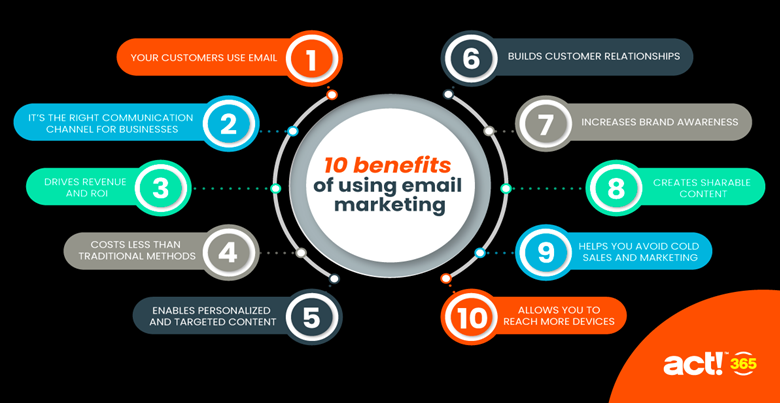
The product or service that one customer can’t live without is one that another has no use for. The key selling point for one prospect is a weak
point for another. Simply put, people care about what’s relevant to them, and don’t want to weed through what’s not. So why send irrelevant content? Send only information that matters to recipients, and watch your response rates rise.
The key is to determine what content is relevant, and then divide your list into groups of people interested in the same information. Don’t know what that is? Ask them. We’ll discuss ideas on how to easily collect this information from your subscribers at the end of this chapter.
Divide and Conquer
Once you know what content your subscribers find relevant to them, divide your list into segments that make sense to your company or business model. Use segmentation as done in your traditional marketing efforts, but many organizations overlook segmentation in their email initiatives.
Customize to Maximize
When you’ve segmented your list according to what works for your business model, maximize action and conversion by sending customized messages to your different audiences. Customize the message content, customize the offer, the subject line, the time of day you send, etc.—all in a way that is directly relevant to the audience you’re sending to.
Using dynamic content to send targeted information—Dynamic content can make sending targeted content to recipients easy. Dynamic content allows you to create a single email message that delivers multiple versions based on recipients’ demographic profiles or other data. The possibilities are limited only by the data you have for your subscribers and the content you have that is relevant to that data. Messages can be customized to replace groups of text or images based on variables such as:
- a recipient’s personal data (state, status, )
- past purchase history
- past email activity
- website activity
- any other data you have about your email recipients
The possibilities for customizing messages with dynamic content tools are almost endless. For example, an electronics retailer could use dynamic content to deliver an email newsletter with an opening paragraph about computers on sale or a paragraph about new MP3 players. The actual paragraph that was delivered would depend on the recipient. Here are some more real-world examples of how marketers are using this powerful technology:
- Customizing updates by state, province or other geographical characteristics
- Substituting entire paragraphs of text or graphics based on demographic data
- Creating cross-sell offers based on previous purchases
- Alerting customers of consumable products (items or components that need to be replaced on a regular schedule) or recurring services (which need to be performed at specific intervals, such as oil changes and tune-ups)
Taking personalization past first name—Personalization is a simple execution that inserts data elements or content held in your database into an email message. At its most basic, personalization inserts a salutation such as “Dear First Name.” We encourage you to think beyond first names. Personalization allows you to insert any text for which you have a data field. Here are some other examples for using personalization:
- User-specific information, such as customer number
- Contact information for a salesperson in the recipient’s region
- Location information for the store closest to the recipient
In its most sophisticated uses, personalization can even enable you to customize images based on personal data.
Measure and Modify
This should be nothing new since you’re already tracking your email campaigns for response and conversion rates. Certainly your overall response rate should rise when you send relevant messages to carefully selected audiences. If a particular segment isn’t responding as well as the others, review and make adjustments to improve response. If you don’t see a significant overall increase in response rates when you send to segmented lists, continue to explore possible hypotheses, test them and only when all else fails, save resources by sending only one email.
Easily Elicit the Information You Need
At signup—Collect information and ask your subscribers what is most useful to them while they’re signing up to receive emails from you. This can be handled several ways.
- Make the info required in order to sign This is advisable only if the information is absolutely necessary. Otherwise, you risk losing signups.
- Include the additional fields but make them optional. However, be careful not to add too many fields to the page or the mere length of the form may scare people
- After they’ve signed up, ask them to provide additional information on a separate page to avoid losing
Re-register—If you’ve been publishing for a while, periodically ask subscribers to re-register. Advise them that you want to make sure their info is up to date. This is also a good way to make sure your list is fresh.
Survey—Send an email and ask subscribers to complete a short survey. To increase response, offer a premium or fun prize.
When you incorporate segmentation into your email marketing strategy, you should see significant gains from sending relevant, targeted content to specific audiences. Specifically, you should notice an increase in opens, click-throughs, conversions, and ROI. You should also see a decrease in list attrition since you are sending content that readers are genuinely interested in receiving. With tools like personalization and dynamic content readily available, segmentation becomes a strategy that is simple to execute. Combine simplicity with significant gains, and segmentation becomes a strategy you can’t afford to ignore.